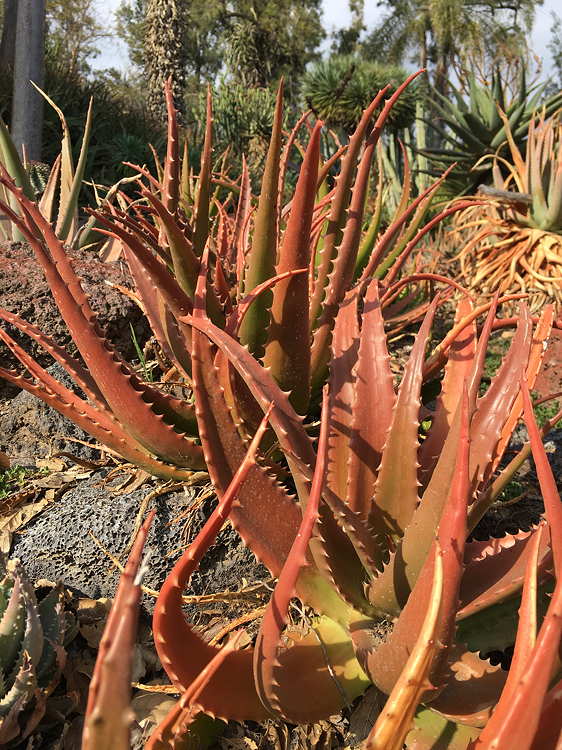Closely related to Aloe dorotheae, A. bussei also grows on rocky outcrops where its leaves blush a vivid, glossy pinkish color. A well-drained situation with bright light and not excessive watering is required to achieve this coloration in the garden. A. bussei differs from A. dorotheae in its usually 1 to 4-branched inflorescences. It is named for Walter Busse, a German agricultural officer in Tanzania at the beginning of the 20th century. We offer tissue-cultured plants of HBG 18918, a plant collected by G. W. Reynolds in April, 1957, at the type locality: Pembamoto, Mpwapwa District, Tanzania. $10.

Published in the Cactus and Succulent Journal, Vol. 90 (2), Summer 2018




